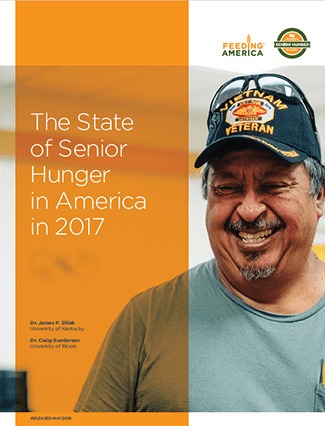Grey Matters: Senior Hunger in Maryland
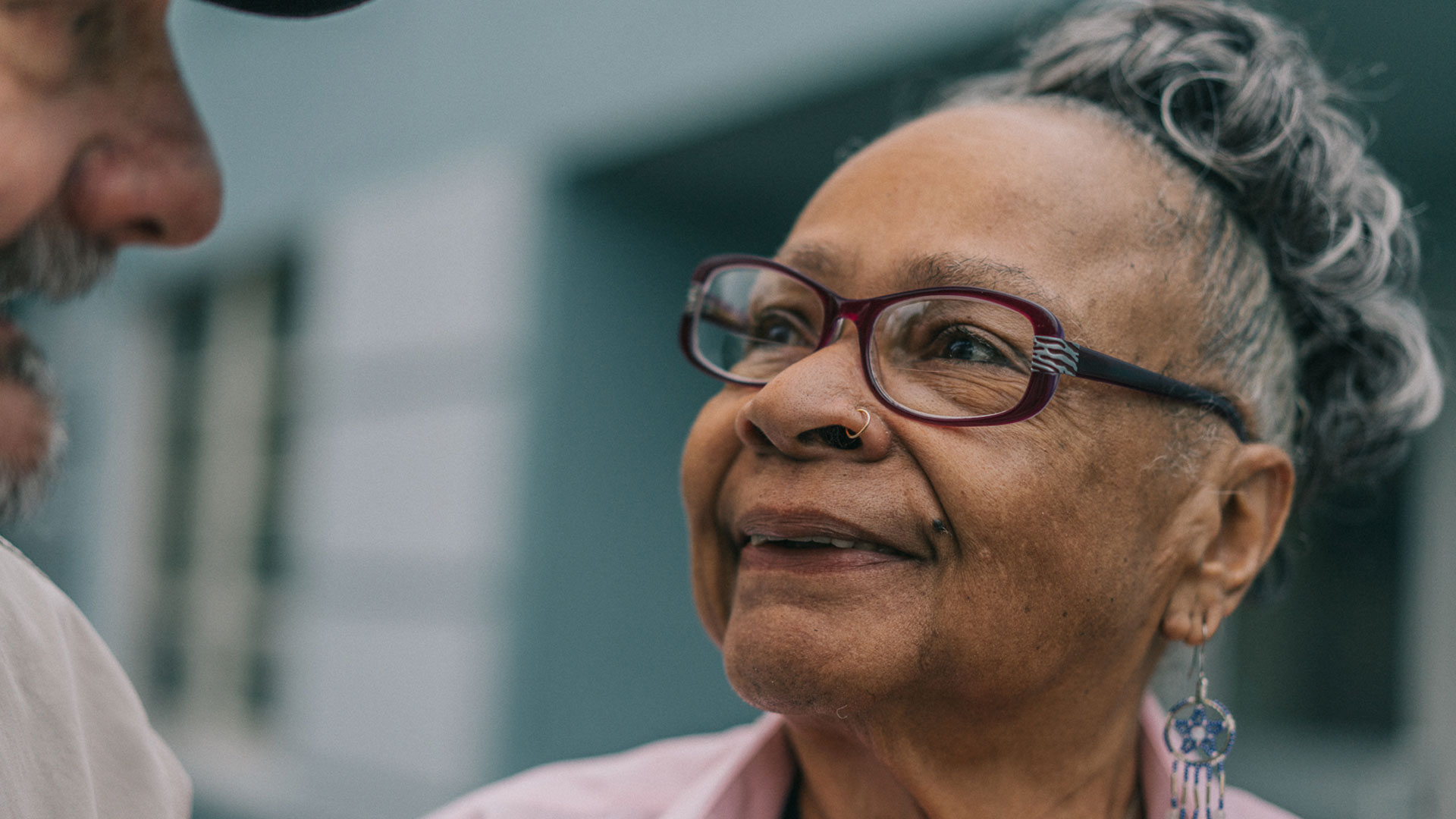
According to Feeding America’s 2019 report, The State of Senior Hunger in America, the number of food-insecure seniors nationwide is more than double what it was in 2001.
Today in Maryland, about 1 in 20 seniors are unsure of where their next meal will come from, and with the senior population expected to increase by 40 percent by 2030, the challenges of ensuring seniors have the nutrition they need to thrive will grow significantly as well.
In addition to the growing senior population, the National Institute on Aging reports “Life expectancy nearly doubled during the 20th century with a ten-fold increase in the number of Americans age 65 or older.”
With more and more people living to 100, what does this mean for retirement funds that are stretched thin? Initially, it means that many seniors with limited incomes will face the difficulty of making ends meet for a longer period of time than expected. It also is likely to result in a greater reliance on the food assistance network.
But as we’ve done for more than 40 years, the Maryland Food Bank will be here to assist our most vulnerable populations.
How Food Insecurity Affects Senior Citizens
Seniors deal with unique health challenges in their advanced age. As Feeding America reported, poor nutrition increases the risk for disease and challenges of disease management.
Food-insecure seniors are more likely to have chronic health conditions, such as:
- Depression
- Asthma
- Chest pain
- Limitations in activity
- High blood pressure
We know that senior hunger is a growing concern for Marylanders, with people like 68-year-old Janet being forced to make tough choices between medical care and grocery shopping. Janet got sick from trying to stretch her food supply for too long.
And Janet isn’t alone. Teresa, who works for our Baltimore-based partner Trinity New Birth, recently shared, “We help a lot of elderly people who have to choose between medicine and food. They speak of it on a weekly basis, how if it wasn’t for the pantry, they don’t know how they would make it.”
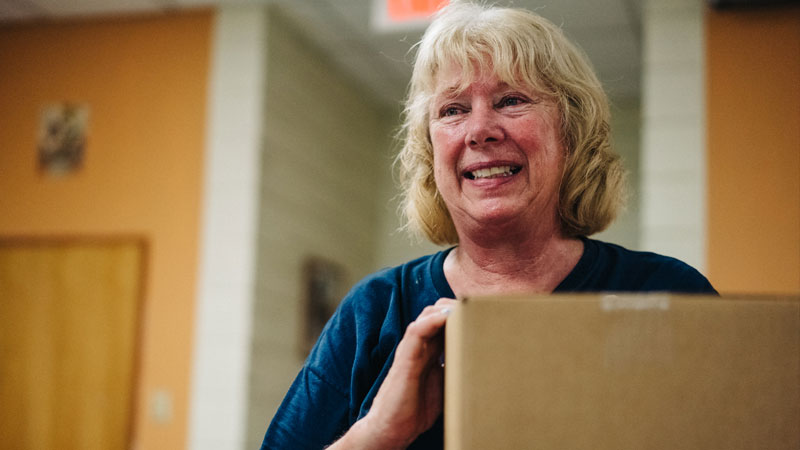
“We help a lot of elderly people who have to choose between medicine and food. They speak of it on a weekly basis, how if it wasn’t for the pantry, they don’t know how they would make it.”
Seniors struggle to manage existing health issues when they face food insecurity. One report concluded that food-insecure seniors are 66 percent more likely to experience a heart attack. Other complications include diabetes and gum disease, just to name a few, for food-insecure seniors who are worse-off than seniors who have regular access to the nutritious foods they need to stay healthy.
The high cost of health care makes it even harder for seniors to stretch their limited incomes, as poor nutrition can worsen medical conditions. Victor, an 82-year-old Eastern Shore resident, knows what it’s like to have little money to pay for the medication he needs and other bills, let alone money to buy food.
“I’ve had lung cancer,” Victor said. “I went through radiation. I had three tumors. I had bladder cancer too.”
His diminishing health forced him to stop working several years ago and turn to food pantries for assistance.

The Tough Fight Against Senior Hunger
In Maryland, more than 45,000 people, many living in senior communities or multi-generational living situations are experiencing food insecurity. Many seniors are without the transportation they need to access food resources.
“For about a four-year period, we were in a food desert,” said Kathy Geisbert, who coordinates the monthly food distribution events at Brunswick House in Frederick County. “We didn’t have a single grocery store in Brunswick and had to travel to Frederick or Charles Town, which is not easy for many of the residents.”
We deliver food directly to these residents, removing the huge barrier to food access these Maryland seniors with limited mobility and transportation face. For Ann, a resident of Brunswick House, this is the answer to finding her independence again.
“I don’t know who I would turn to if this food wasn’t available. This lets me be on my own.”
As part of MFB 2.0, our five-year strategic plan, we’re focused on increasing our food distribution to better meet the need across the state for everyone—including the growing senior population. With your support, we can supply both food and dignity to our senior neighbors, providing even more nutritious food options for seniors with health challenges who require special diets.
Targeted Programs for Senior Communities
At the Maryland Food Bank, we manage programs that directly target the unique needs of our vulnerable senior population. Many of these programs provide food access for seniors that is truly the difference between life and death.
For Barb, a 62-year-old former social worker, support from the food bank gets her through difficult times—three strokes, lupus, multiple sclerosis, a heart condition, and on top of all of these health challenges, being forced to retire early to go on disability.
“My husband and I slip through the cracks. We don’t qualify for a lot of things.”
Our senior-focused programs meet these residents where they are, offering a lifeline to those in the aging community.
Pantry on the Go
Mobile food drops reduce transportation barriers for seniors. Our trucks deliver fresh produce and other non-perishable foods to retirement homes and senior centers.
SNAP Outreach
The Supplemental Nutrition Assistance Program (SNAP) is a federal program for food-insecure Americans that is often overlooked because of the difficulty in applying. We help seniors who may qualify for these benefits by simplifying the process.
Cuts to federal funding for SNAP and Groceries to Go! would have a crippling impact on a senior population that depends on these programs for access to adequate nourishment. We will continue to advocate for these important nutritional assistance programs that serve low-income seniors in Maryland—changing lives for those at risk of food insecurity.
Regional Senior Hunger
Senior hunger touches every corner of our expansive network in Maryland—yet in some areas, it’s especially prevalent. Jennifer Small, director of regional programs for the Eastern Shore, noted that communities east of the Chesapeake Bay have especially high numbers of seniors in need.
“It’s a population that’s growing and one that we really need to bring attention to—just like our children,” said Small. “We’re getting creative with how we address food insecurity on the Eastern Shore, especially with a very heavy senior citizen population. Obviously, there is a great need when we’re looking at 1 in 6 food-insecure seniors, versus 1 in 8 food-insecure adults on the shore.”
Although senior hunger is prominent on the Eastern Shore, it’s a serious issue for the whole state. Network Relations Coordinator Brandi Hunter has seen tremendous progress at MFB in retrofitting our programs to meet the unique needs of seniors. With Pantry on the Go, for instance, seniors often don’t have the transportation to make it to the distribution, or the means to carry 60 pounds of food back home. We have to continue to work creatively to address this challenge.
“Seniors don’t want just anything to eat. They are a little picky because of their health concerns,” said Hunter. “If we bring apples that are too hard, seniors don’t have the teeth to eat them. Seniors are mindful and aren’t just taking whatever we give them. They know what they need at this point in their lives, and we need to select the right food for them.”
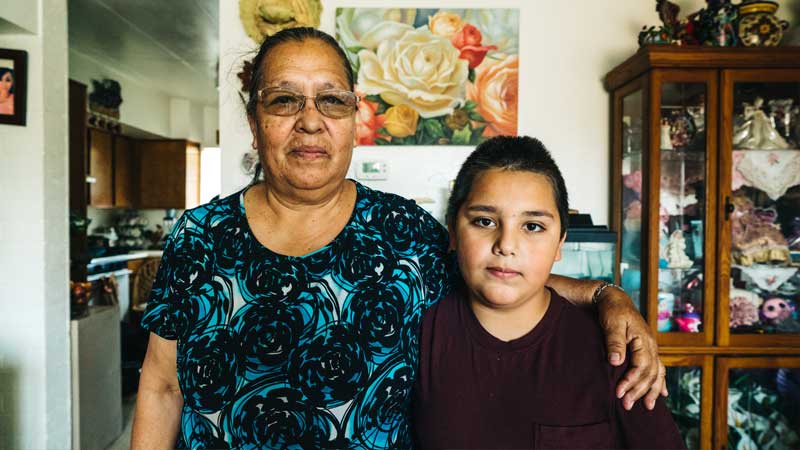
Nutritious Food for All Ages
Similar to children who depend on nutritious foods to thrive, our seniors are among the vulnerable populations that depend on consistent access to healthy foods. And, the truth is, healthy food can cost more than quick, nutrient-lacking options.
Seniors living on a limited income often find themselves straddling the poverty lines with worsening health conditions. The Food Research & Action Center (FRAC) estimates that the direct and indirect health-related costs of hunger and food insecurity in the U.S. to be $160 billion.
The level of nutrients in foods for seniors is especially important for those on special medical diets, like older adults battling diabetes. When our aging neighbors have to stretch their budgets and stray from their doctor-prescribed diets, they risk serious health complications.
Diets with too much saturated fat and sugar, as well as limited mobility and other factors, can lead to obesity, a serious concern for our country. The Centers for Disease Control and Prevention (CDC) estimates that the prevalence of obesity was 41% among adults aged 60 and older. Obesity-related conditions include heart disease, stroke, type 2 diabetes, and certain types of preventable cancer.
We’re prioritizing the distribution of nutritious foods to seniors in need as part of our MFB 2.0 strategic plan. This includes seeking more donations of vegetables, fruit, whole grains, lean proteins, and low-fat dairy. We have also developed relationships with thousands of distribution partners across the state, creating a network of food pantries, shelters, soup kitchens, and faith-based organizations to help us reach seniors in need.
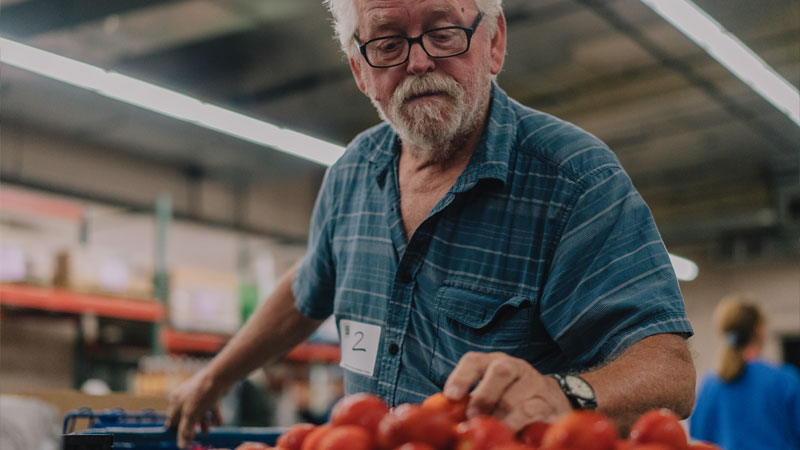
Join Us in the Fight Against Senior Hunger
Maryland seniors should not have to choose between paying for medical care, utility bills, or food. No one should.
Poor nutrition coupled with the normal complications of aging can have a life-altering impact on senior citizens. While already battling health challenges that come with advanced age, we need to ensure that Maryland seniors have regular access to nutritious foods, regardless of their income levels.
Let’s provide our seniors with a diet rich in fresh fruits and vegetables that they need to flourish. Together, we can prepare for the future when life expectancy is expected to keep increasing—a Maryland that’s home to even more seniors living longer, healthier lives.
Get updates on our progress in the fight against hunger
Want to see how your involvement directly impacts the well-being of your neighbors in need? Get the latest news sent to your inbox.


